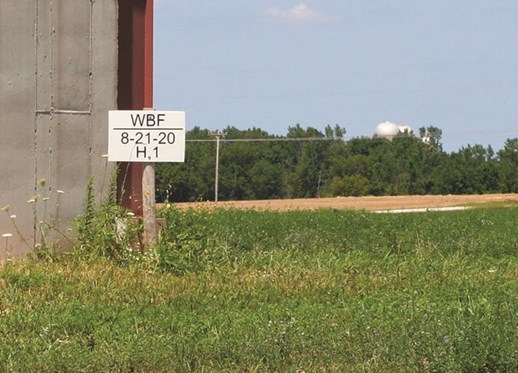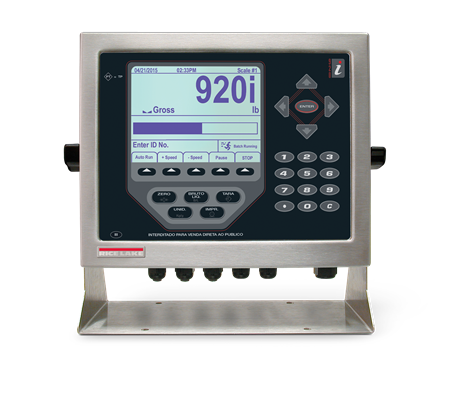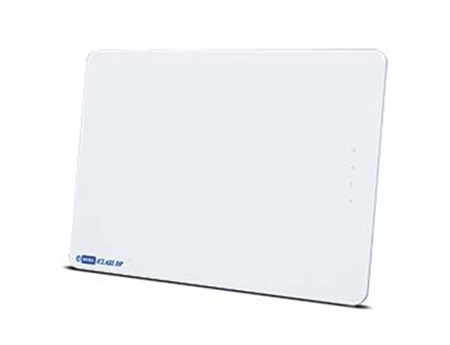Is the website displaying in the correct language? Please confirm or select a different language.
Your region has been set automatically. Please confirm or select a different region.

Rattling Acres
It can be quiet in Wisconsin’s farm country, with July’s mid-day sun forcing every living creature to shade and shelter, and only the occasional buzzing fly or swish of a tail to cut the silence. But when Wisconsin’s Farm Technology Days came to Outagamie County in July of 2012 things were far from quiet. In fact, under the shade of one local scale dealer’s tent, business was busier than ever.
Greg Hardy of CCS Systems was with Rice Lake’s Mobile Marketing Unit at the show. He talked with dozens of local farmers throughout the event, many with the same question—what was that new scale system out at Wiese Brothers? They had heard about out-of-the-box software for truck scales and even tried it out, but this new system did more. Word was spreading fast about new equipment at one of the area’s largest agricultural operations.
Wiese Brothers Farms, owned and operated by Mark and Dave Wiese (pronounced Weezy) of Greenleaf, is a vast and expansive operation on the Outagamie County skyline. Mark Wiese is less family farmer and more modern business man, minus the three piece suit.
“We farm about 5,200 acres of land, milk just short of 5,100 cows, and have another 4,500 heifers on site,” Mark explains. “Two different parlors, two different facilities, all of our feed storage is here, at the main farm. We built our own feed mill to blend all our own proteins, we own a trucking company and haul our own milk, and I’ve got 35 semis that go over the road to bring feed ingredients that we harvest right back here.”
Mark’s cell phone begins to ring. He answers, has a brief exchange, and hangs up. “We’re fairly vertically integrated, we buy directly from the farmer for our corn and our forages, we have a grain drying facility and we’re a licensed grain warehouse. This feed mill,” as he points upward to a silver, shimmering structure, “my brother Dave and I literally bolted it together ourselves.”
Feeding the cows is a major part of the Wiese operation. During the growing season they buy chopped alfalfa and corn from farmers eight miles in every direction, and use their two forage harvesters and a fleet of semi-trucks to bring it all back to their main farm. It’s here where the feed is stored and mixed, and also where you’ll find a recently installed 70-foot by 12-foot SURVIVOR® OTR truck scale. This beauty has all the bells and whistles, yellow dyed-concrete approaches, a LaserLight® Stop/Go Remote Display, RFID reader, a climate controlled scale house with a 920i® weight indicator, and a long-range antennae with wireless transmitter.
Each field that the Wiese Brothers harvest is marked with a small sign that reads “WBF” (short for Wiese Brothers Farms), followed by numbers representing the section, town and range, and a nickname like “LF” for Larson Farm. If a co-op is sent to spread fertilizer on a field, they’re given the section, town and range along with field nickname, and if it doesn’t match, they won’t go into that field. Those field markers are helpful during harvest time too, when Mark pays each producer individually for their crops.

“Before, in order to monitor our inventory and purchased feed, we’d have to route trucks (from the field) back to our other facility to weigh and come back here. We had a scoreboard mounted by the scale, and drivers would just write the weights down onto a clipboard they kept in the cab, along with the field marker numbers,” Mark explains. “I’d have to sift through those hieroglyphics that they wrote down, and some of them would switch drivers, or forget to put an empty weight from the truck at the beginning of the day or something like that. It was just an absolute mess.”
Now as the driver pulls up to the scale, an RFID reader reads the tag mounted on the side of the truck, and the system pulls up that truck’s known empty weight. The driver uses a two-button remote in the cab to scroll through field numbers on the LaserLight Stop/Go remote display, and selects the appropriate field. If the driver pulls onto the scale before the field selection is made, the LaserLight tells the driver to stop.
Once the weight is taken and stored by the 920i, the driver pulls through and unloads at a designated bunker or silo. “It takes less than 90 seconds to unload and they’re out the driveway on the other end and right back to the field. That 90 seconds doesn’t sound like a lot of time, but if anybody bottlenecks anywhere, that means two trucks are back to back at the bunker.”

Mark continues, “I can tell when I’m pushing feed if they stopped for a bottle of pop in town, because it [messes] the entire rotation up. And now you’ve got trucks backed up and it’s two hours before that rotation is straightened out again. When we’re harvesting feed, I don’t care if you’ve got 20 trucks, eight push tractors and 50 men, if the chopper is not chopping, you’re doing nothing. The guys are standing around. That truck has to get back to the field fast enough to keep that harvester moving, because if you’re not rattling acres off, you’re accomplishing nothing.”
“If we’re chopping a twelve-hour day, just by not having to stop at the other facility—each truck alone is saving about two hours per day,” says Mark. The smoother traffic flow keeps the choppers chopping too, tightening up labor expenses significantly. And the savings don’t stop there.
Most farmers have crop insurance, but not many give it the attention that Mark Wiese does. He’s been insuring his crops by specific section, rather than as a total yield, for almost 12 years. “If I have a field that fails, and that field is not singled out by its own section, town and range, I have to wait and incorporate that into my total yield. So the yield on my good fields would make it so I didn’t have an insurance claim on my bad fields,” Mark explains.
With the new Rice Lake system, paperwork is a piece of cake. “We can be harvesting in two different sections, and when they come in, it’ll print off and put everything in order on the spreadsheet and give the total tons for that section, all added up and completely done. The only thing we don’t know at that point is the moisture content of the crop, and that we just have to do manually yet. It’s a big deal because the farmer is entitled to more money when there’s less moisture. Right now, we burn down samples and figure that in. But we’re working with a company to do a microwave test and incorporate it into the system. I don’t think that’s too far down the road.”
The wireless transmitter sends all of the information straight back to Mark’s main office where his staff can generate reports at the push of a button. “When you’re purchasing feed from other growers it’s a look of professionalism, when you give them a spreadsheet. Before I’d have to copy those manually written load sheets and add them to my invoice just so they could look back and verify them, and it was amazing how some of that stuff could get written down wrong and how you’d have to sift through it half a dozen times to make sure you didn’t make a mistake,” he says. And for a man whose cell phone rings almost non-stop, clearly time is at a premium.
Mark adds, “There was so much potential for error throughout the process. We don’t want to pay for what we didn’t get but I do want to pay for what we received. And this has just streamlined it to no end. It takes all of the BS out and it is what it is.”
“We had a problem, and Rice Lake gave us a solution. We sat down and told them what we needed and they came through,” thanks to Greg Hardy at CCS Systems, who designed Mark’s system and worked with Ben Fauske at Rice Lake to bring it to life. “It was pretty impressive, for not visiting us himself or having a hands-on explanation, the way that guy [Ben Fauske] knew just what we wanted.”
“The number one reason was speed, to get those trucks in and out of here as fast as we could and eliminate all the truck traffic, but also the documentation and the accuracy. Accuracy not only of our inventory, but the inventory for our crop insurance, inventory for purchased feed, and the accuracy and professionalism when we send out our payments.”
It was those payments, just simple slips of paper. Who would have thought they could generate so much word of mouth? When told about all the buzz at the show regarding his new scale system, Mark replied, “Wish we could have gone, we were so busy here we didn’t even make it,” as his phone rings yet again.

Subscribe to Rice Lake Magazine
Sign in or create a Rice Lake website account to request a Rice Lake Magazine filled with application stories like this one be sent to you.
Account Sign In Create an Account


 My Account
My Account

